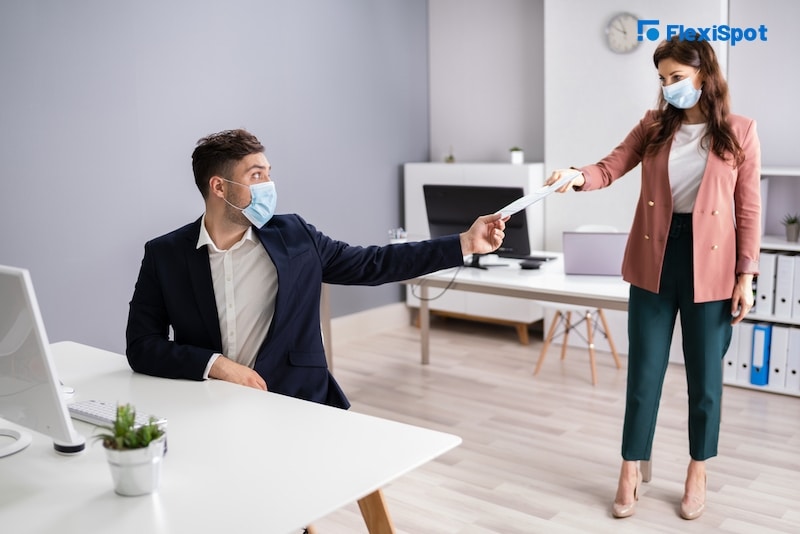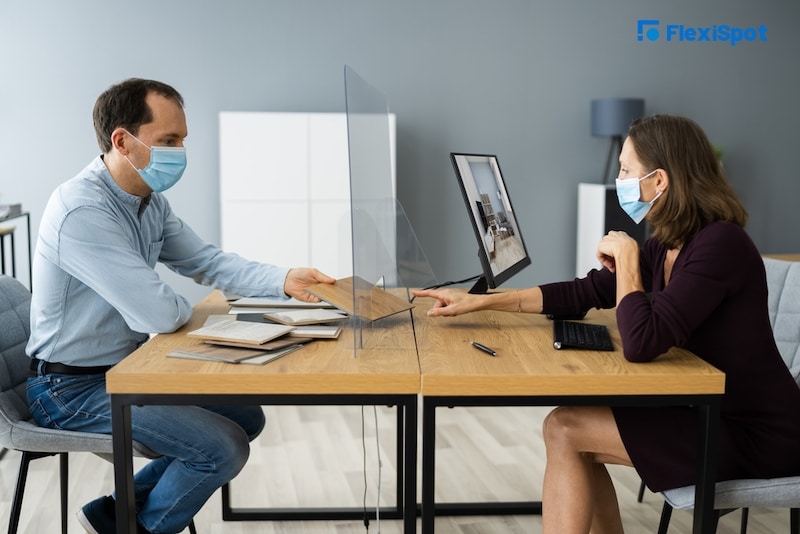The pandemic posed several new challenges for people around the world. The nature of these 19 varied significantly, but they impacted every person on the planet. From doctors and nurses to software developers and field technicians, millions of workers around the globe were affected by the pandemic. Within a few days and weeks, the workforce navigated to a remote work arrangement yet still maintained the synergetic relationship between the organization and the workforce’s physical and mental well-being.
But since the pandemic continues in different parts of the world, global companies are taking a localized approach and aiming for a safe return-to-work for their employees. The same is true for local businesses looking forward to welcoming their employees according to the government policies. And while the businesses may be eager to consider return-to-work for employees, many employees prefer to continue to work from home. Moreover, some employees also wish to work a few days from the office and rest from home. Furthermore, some workforce members have also expressed their desire to work for another company if their current employer is persistent about returning to a physical workspace.
In such a situation, businesses need to consider a few crucial points to develop a return-to-work strategy for their employees. After all, it is a difficult transition as businesses need to rebuild employees' trust and be prepared with ideas to tackle any challenge that comes along the way. Here are three crucial points to consider in your return-to-work strategy.
#1. Start with a Return-to-Work Planning Team
The most crucial point to consider in your return-to-work strategy is to establish a return-to-work planning team responsible for creating and implementing the return-to-work plan. Moreover, the same team should also monitor the plan and see how employees respond to it.
The return to work planning team needs to have members from different departments of the organization to get a representation and say when developing the strategy. Moreover, it's also a good idea to have external advisors who can guide you about the latest government policies that are changing per the pandemic needs.
Lastly, the most critical role of this return-to-work planning team would be to monitor the return-to-work process and address employee concerns and issues as they return to work.
#2. Develop a Flexible Return-to-Work Plan
As your return-to-work planning team prepares the return-to-work plan, know that no one plan fits all organizations. Similarly, there is no single return to work plan that fits all employees. Just like the needs of every organization are different, so are the needs of employees working in different departments and different roles.
Hence, as you consider the return to work strategy, don't forget to work on a flexible plan that can adapt well to changing guidelines, recommendations, and orders. Similarly, your return to work planning team should also be able to cater to individual employees' needs while considering the workplace's location and the number of employees along with COVID-19 safety measures, which include social distancing and maintaining a clean workplace.
#3. Preparing the Workplace for Returning Employees
The third crucial aspect to consider is your return to work strategy is to prepare the workplace for returning employees. The preparations can revolve around developing and implementing workplace strategies and controls to reduce the risk of employee exposure to the virus. Moreover, the preparations should also mitigate other possible health risks associated with working in an office.
Let's break down these measures into smaller steps.
Implementing COVID-19 Prevention Measures
To get started with the return to work strategies, perhaps the most critical one is the implementation of COVID-19 preventive measures.
One of the most effective COVID-19 preventive measures is physical distancing. Before your employees return to work, you need to design the workspace arrangement such that there is enough physical distance among all employees. If space is a limiting factor, try arranging for seating in conference halls and dining areas to ensure the health and safety of your employees.
Secondly, implementing COVID-19 preventive measures includes good hygiene practices such as installing sanitizer dispensers, washing hands at several locations inside the workplace, and routine cleaning and disinfection of all surfaces.
And while you are planning on implementing COVID-19 preventive measures inside the workplace, don't forget to conduct a brief health screening as employees enter the office space. Moreover, encourage all employees to self-monitor and avoid coming to the office if they experience any signs and symptoms of COVID-19.
Communicate Effectively
While preparing for your employee's return to work, it is important to communicate with the employees regularly. The business needs to be clear about communicating measures and policies that the business is adapting to ensure that employees remain safe and business operations run smoothly.
Invest in Employee’s Physical and Mental Health
As businesses prepare the workspace for returning employees, one of the most critical measures they need to take is investing in employees' physical and mental health. Having a return to the work planning team,
If you think of a single thing that almost all remote workers have realized during the pandemic is taking care of their physical and mental health. An increasing number of remote workers invested in ergonomic office products for their home office after realizing how prolonged sitting can affect their posture and lead to other health conditions.
The use of ergonomic office products such as alcove riser or adjustable standing desks, ergonomic chairs, and desk bikes helps improve your posture, which reduces symptoms such as pain and tightness in the muscles and improves mental health. Moreover, since ergonomic products make working more comfortable for the employees, it boosts productivity, and the quality of work that employees deliver, which leads to improved job satisfaction, and the results reflect in business financials.
Hence as you prepare for the safe return of your employees, plan on investing in ergonomic office products such as standing desks, but if you feel that would require you to make major changes in your office layout, you can also go for supportive products such as AlcoveRiser Standing Desk Converters M7 that can be placed on your existing office table which can increase the height of your table from 12cm to 50cm. As a result, your employees can enjoy the benefits of a standing desk without actually investing in one. The height-adjustable motorized alcove riser offers exceptional features, which include
Devise a Monitoring and Response Plan
As you prepare the workplace for the safe return of the employees, you should be prepared that your plan will need continuous monitoring. Moreover, you will also need to be prepared to respond in case your plan is not working as expected. Businesses need to be prepared with a response plan in case of an emergency, for example, continuing operations in case of a re-closure of the workplace.
Our Take
As businesses reopen in accordance with state and local government policies, it is critical that companies start planning and preparing for their employee’s return to work. Having a return to work planning team, flexible return to work plan, and preparing the workplace for the safe return of employees are some of the critical considerations for an effective return to work strategy. As you plan a safe return for your employees, don't forget that investing in ergonomic office equipment will bring several physical and mental health benefits to your employees, which will also reflect a better financial position for your organization. While spending on ergonomic products may seem like an expense right now, given the long-term returns, it is a worthy investment.
So what are you waiting for?
Plan and prepare for the safe and effective return to work strategy today!





